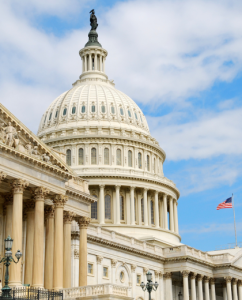US headed for net negative migration, research says
More people are set to leave the US that arrive for the first time in 50 years, new research suggests.
And economists are warning this could hinder economic growth and fuel inflation.
 Economists at two Washington think tanks say the Trump administration’s immigration policies are driving this reversal with measures like near-total shutdown of the southern border and threats to international students.
Economists at two Washington think tanks say the Trump administration’s immigration policies are driving this reversal with measures like near-total shutdown of the southern border and threats to international students.
They also point to the loss of legal status for many new arrivals and a rise in deportations.
Economists from the liberal-leaning Brookings Institution and the conservative American Enterprise Institute say, in a new study, that a net outflow of migrants could stoke inflation.
It also could renew the labour shortages loke the ones the US experienced during the pandemic.
Longer term, it could even have implications for fiscal policy, with fewer immigrants paying taxes and supporting entitlement programs such as Social Security.
“For the year as a whole, we think it’s likely immigration will be negative. It certainly would be the first time in more than 50 years,” said the Brookings Institution’s Wendy Edelberg.
The research points to an increased likelihood of negative immigration in 2025, compared with the economists’ last projections published in December.
Economists across the political spectrum already expect the US to experience the lowest immigration levels in decades, and some say there’s a real possibility that migrant outflows will eclipse inflows.
Migration levels last reached a longtime low during the 2008 global financial crisis, which sparked a mass departure of Mexican immigrants.
Already, the foreign-born workforce has shrunk by more than a million people since March, Labor Department data shows.
That’s a sharp reversal from a recent surge in immigration that in 2024 pushed the share of foreign-born workers in the US labour force to the highest level on record, boosting the country’s economy in the wake of the pandemic.
The reduction in available labour will disproportionately hit sectors such as agriculture, construction and hospitality – which all heavily depend on immigrant workers.
The economists say the scale of the potential exodus depends on the extent to which the Trump administration can deliver on its goal of removing one million migrants, including people who entered legally under Biden-era programs but have since lost their status.
Also, the inflow of hundreds of thousands of overseas students could be reduced if US Secretary of State Marco Rubio is able to make good on his promise revoke US student visas for Chinese nationals.
The economists say net migration falling to zero and potentially going negative could be a turning point in the US’ demographic and economic trajectory, and a significant shift from the nearly three million net migrants the US accepted last year.
They say a lasting immigration slowdown could limit economic growth, because fewer workers leads to a weaker economic output.
The workforce is already growing more slowly than it did 10 or 20 years ago as the bulge of baby boomers reaches retirement age. Tighter immigration would slow the growth of the US labour force further.
“You take those people away at a time when demographics are resulting in a lack of replacement for retired workers — all that’s a recipe for higher inflation,” Ms Edelberg said.












